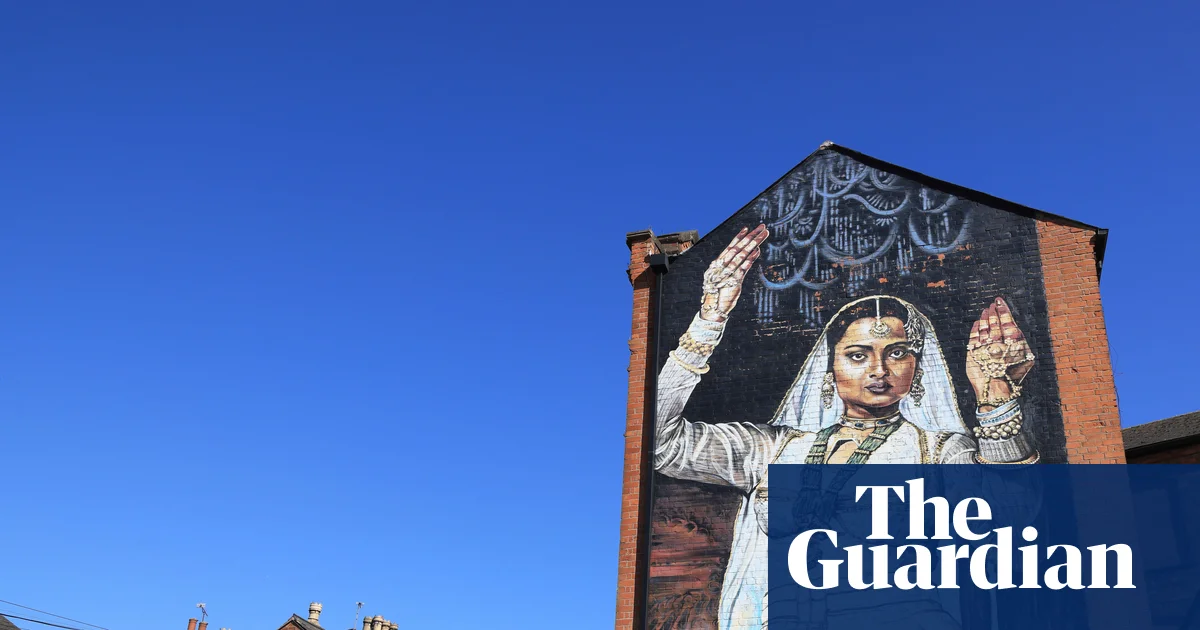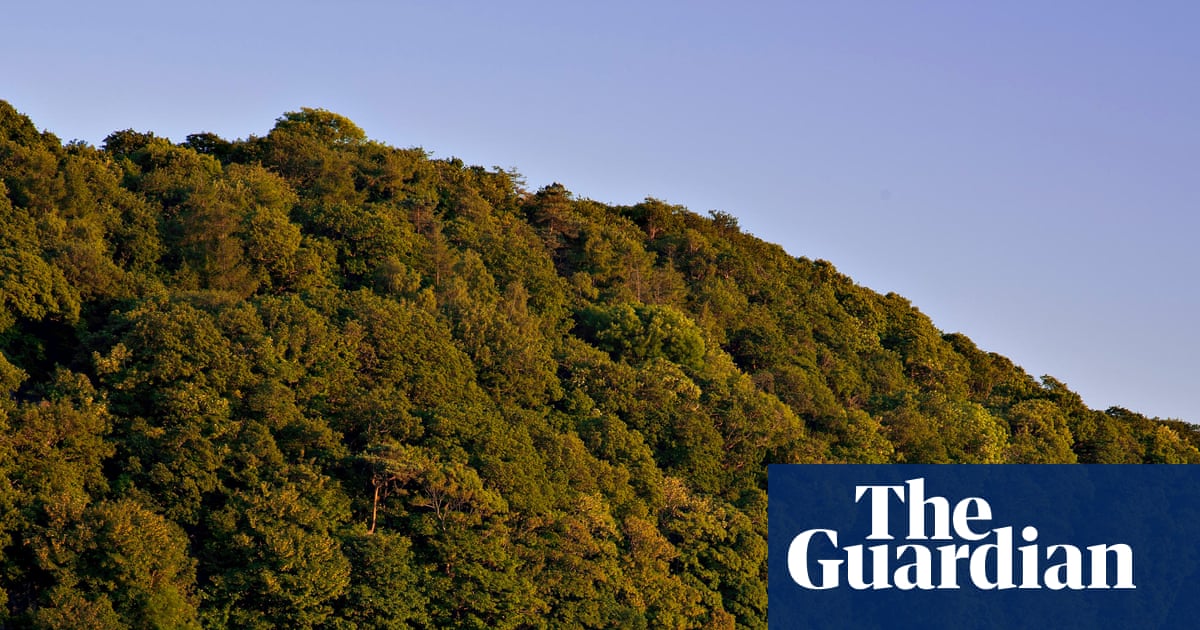Where tourists seldom tread, part 19: three UK towns with industrial legacies | United Kingdom holidays
Academics, journalists and pundits talk at great length about the conundrum of overtourism; the ready-made solution is simply to swerve the crowds. These three towns are regional centres where you will never need to queue, but will come away culturally stimulated and historically enlightened.
Leicester
Like many people, I’ve spent a lot of my travels going to edges, extremities, ends of the road. I overlooked Leicester because it was so very central – quintessentially in-between. The Fosse Way, from Lincoln to Exeter, bisects it; Watling Street, from Dover to Wroxeter, passes nearby. The stylish, high-spec Jewry Wall museum – which reopened in July after a major redesign – shows how roads and traffic made Roman Leicester (Ratae Corieltauvorum) a wealthy, important hub: sublime mosaics; a gold ring; a bathhouse complex; a wall still standing.
A cluster of medieval and Tudor structures beside the River Soar, including stone gateways, a church and castle motte, indicates a major religious centre. I was the only visitor on a Sunday morning. Near this convenient national crossroads, Richard III was able to gather forces from across the kingdom for the Battle of Bosworth; little good it did him. Leicester’s King Richard III Visitor Centre delineates the whys and wherefores of the blood-drenched savagery of the Wars of the Roses. The mental shift demanded of you as you segue from the vast, interlocking, bastard-rich Plantagenet family trees and riots of heraldry to the quiet science of archaeology and, finally, to the cold, austere tomb of the dead hunchback in the cathedral next door, is not insignificant. This is a city so loaded with history that every new retail and hotel development unearths new treasure or traces of past peoples, like a stratified tell in the Holy Land.
A pint in the Globe allowed some thinking time and – as the former preferred boozer of stockingers – a natural link to Victorian and Edwardian Leicester, which rippled with entrepreneurial energies. Thomas Cook, Walkers crisps, Wolsey clothing and Currys started here. Garments, hosiery and corsetry made the city more like a Lancashire town. Chimneys, mills and, most reassuringly, makers are still in evidence.
The 21st-century city is multipurpose – the centre has diversified from retail into gaming, co-working, education, dining, cocktails, cafes – and famously diverse. The Golden Mile (Belgrave Road) is a thriving, gimmick-free Asian gauntlet for clothes, jewellery, spices, fresh veg and restaurants. The likes of Bobby’s, with its Bollywood-inflected interiors, and Sharmilee won the city the Curry Capital gong in 2024. Belgrave Road was part of the Fosse Way, which is thought-provoking – ancient Rome was multicultural too.
Things to see and do: Guildhall; Abbey Park; King Power Stadium; Curve theatre; De Montfort Hall
Paisley
Someone on Reddit asks: “Why is Paisley even still a place?” Sixty comments follow. At the end of it, I know Paisley is most definitely a place. I have to admit, as an English northerner, I thought of it as somewhere imprecise – suburb, district, city borough. But even on the non-stop train (nine minutes from Glasgow Central), you know you’re crossing a proper green belt and, when you arrive, you see towers and domes above the trees. Paisley stands apart; it stands tall.
Bold buildings hint at booming textile times. The station – the fourth busiest in Scotland – is Scots baronial. The town hall is a capacious neoclassical palace, recently turned into a concert venue. The mighty Abbey, built on the site of a 12th-century Cluniac monastery, is a solemn hulk (minimally subverted by a witty “Alien” gargoyle). St Matthew’s church, designed by local architect William Daniel McLennan, is a blend of perpendicular and art nouveau – somewhat influenced by Charles Rennie Mackintosh’s Queen’s Cross church in Glasgow, but more strident and startling.
On White Cart Water stand two monumental mills. The massive Anchor Mills is residential and sits beside a weir that resembles a wild waterfall. Mile End Mill is a business centre and has a superb chimney, coffee shop and small textile museum. The dramatic gothic hulk of the Coats building, constructed as a memorial church – and nicknamed the Baptist Cathedral of Europe – is now an event space, used for weddings, proms and as a set for TV series Outlander. Paisley has gone big on repurposing.
The famous Paisley print pattern has its origins in Persia. The teardrop-shaped motif, known as boteh in Farsi, is probably a stylised almond or cypress cone (the cypress was sacred to Zoroastrians). Paisley Museum, undergoing a major refurbishment that will create a display space as good as any in Scotland, owns 1,200 Paisley shawls, as well as looms, pattern books and printing blocks. I was allowed to see the interior on a hard-hat tour and saw a Paisley-emblazoned guitar case and a Ken doll in a Paisley top.
The Paisley pattern features in street art and in the Buddie Walk of Fame, a series of 10 plaques spread around the town centre that honour local legends, living and dead. They include TV show Porridge’s Fulton Mackay; playwright, designer and painter John Byrne – whose Slab Boys Trilogy, originally titled Paisley Patterns, is set in a carpet-making factory; Tom Conti; Paolo Nutini; Phyllis Logan; and Gerry Rafferty (whose Baker Street can be read as an angst-ridden lament from London to his home town of Paisley). Byrne’s and Rafferty’s plaques should really have been placed at Ferguslie Park, the socially marginalised district from which they hailed. As did Gordon Williams, author of the novel From Scenes Like These, a blistering, honest, funny portrayal of social deprivation, violence, sex and booze, as good as anything by Alan Sillitoe, and nominated for the first ever Booker prize in 1969. The novel was long ignored but recently rediscovered. Like Paisley.
Things to see and do: Sma’ Shot Cottages; Paisley Heritage Tours; Mural Trail
Nelson
No town is born totally ex nihilo, but Nelson in Lancashire comes close. An early description is “a peat covered and rain sodden wilderness”. An 1844 map shows a cotton factory, two chapels, the New Inn and a post office. The canal, opened in 1816, enabled the fledgling settlement to ship its wares. When the railway came in 1849, it was known as Marsden – but there was already a Marsden in Yorkshire. The train guard would shout “Nelson!” as the train came to a halt by the Lord Nelson inn. The name stuck. Locals boast, half-heartedly, that it’s the only town named after a pub.
Two thousand terrace houses sprang up around the station – built from stone, many are still there, laid out on a gridiron plan. Mid-19th-century Nelson had nine small general stores, two drapers, two druggists, one tailor and one stationer. There was a saddler’s shop and two smithies. By 1876, to these were added butchers, cabinet-makers, chemists, cloggers, drapers, glass and china dealers, grocers, greengrocers, ironmongers and tobacconists – plus corner shops, fish-and-chip shops and 21 grocery and provisions branches run by the Co-operative Society. There were more than a dozen each of pubs and churches or chapels. What towns – and townspeople – miss isn’t only what we remember from our own lifetimes.
More than 20 mills clacked and whirred with thousands of looms. By 1921, almost 18,000 Nelson residents – divided equally between men and women – worked in weaving. Nine tenths of Nelson’s buildings and population were dedicated to textiles. I’d seen the sad husk of Whitefield Mill from the canalside. All that remains of Riverside Mill is a chimney. Lomeshaye Bridge Mill and Spring Bank Mill survive as mixed-use spaces. Brierfield Mill has been converted into posh flats. A 40ft-high shuttle on the high street is meant to remind people of the weaving heyday; it’s an ineffectual monument, unable to convey anything of the power, graft, suffering or pride of the old times.
There were also minor industries in brewing, quarrying, coalmining, corn-milling, soap manufacture, brick- and pipe-making and engineering. The Victory V lozenge, originally made with ether and chlorodyne (containing chloroform, the opiate laudanum and cannabis), was a local invention. A more mass-market mouth-pleaser was developed by an Austrian confectioner employed at Fryers in the 1860s. He was asked to make a mould for jelly bears, but the resulting sweets looked like newborn infants. They were rebranded as “Unclaimed Babies”. That name didn’t stick, and so Jelly Babies were born.
Nelson is a radical left haven. Weaving unions were strong and often militant. A local newspaper called the town Little Moscow. The first world war saw the emergence of a sizeable pacifist movement, leading to schisms between conscientious objectors and those who believed in the national war aims. Britain’s first working-class female novelist, Ethel Carnie Holdsworth, addressed a crowd of 20,000 at Victoria Park (formerly Victoria Recreation Ground), calling for an end to war as part of the Women’s Peace Crusade. Her 1925 novel, This Slavery, has just been reimagined in graphic form.
The building that best embodies local radical history is Unity Wellbeing Centre on Vernon Street – known as the Independent Labour Party Socialist Institute when it opened in 1908. One foundation stone, in memory of William Morris and Edward Fay, was laid by Katharine Bruce Glasier, a prominent ILP figure, known as “the grandmother of the Labour party”. The other, in memory of Caroline Martyn and Enid Stacy, was laid by Selina Cooper, who had moved to Nelson from Cornwall with her family in 1875 following her father’s death. She started working in the mills aged 10 as a half-timer then full time from the age of 13. Cooper played a leading role in politicising and organising local female textile workers. She lived at 59 St Mary Street, which has a plaque – though not an official English Heritage one.
The streets of stone terraces are attractive and many open on to bracing views of Pendle Hill’s south-eastern face and the steep slope that plummets down from the summit – beloved of fell runners – called the Big End. Nelson also opens vistas in the mind, and pilgrims travel in both directions – to the fells and moors, and to the cobbled streets and regenerated mills.
Things to see and do: Seedhill Cricket Ground and West Indian cricketer Learie Constantine’s house; 66 bus ride to Clitheroe via Pendle Hill; Clarion House; Two Toms Trail
Chris Moss’s trips were supported by Paisley First, VisitScotland and Visit Leicester.


